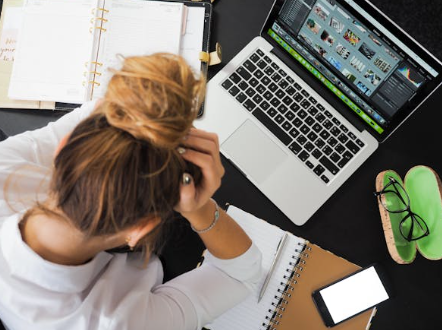
Once a radical act of resistance, self-care has quietly mutated into something far more complicated—another item on the to-do list. What began as a practice of restoration, rooted in the idea of tending to one’s physical and emotional health, has become a performance. A curated, often commodified routine. One that promises wellness, but often delivers anxiety, pressure, and paradoxically, burnout.
From 10-step skincare regimens to journaling apps, adaptogen powders, cold plunges, and digital detox kits, self-care has evolved into a sprawling lifestyle category. It’s aspirational, aesthetic, and strangely exhausting.
So how did a movement designed to help us feel better become another source of stress?
The Rise of Ritual
The idea of self-care has deep and varied origins. For marginalized communities, particularly Black women and LGBTQ+ activists, it once meant preserving mental and physical health in a system that refused to care for them. It was political, deeply personal, and restorative.
Fast-forward to the 2020s, and self-care is a $13 billion industry. It’s no longer just a bubble bath or a walk. It’s a branded experience: “you time” neatly packaged into purchasable segments. There’s pressure to do it right—to meditate daily, eat clean, sleep optimally, track everything, and maintain an Instagram-ready environment while doing so.
The wellness industry tells us that feeling okay is a matter of individual discipline. If you’re still anxious, tired, or emotionally frayed, maybe you just need a better planner or a new supplement.
But this individualized framing often obscures the truth: most of us are tired because the systems we live in are broken.
The Productivity Trap of Self-Care
Ironically, the pursuit of self-care often mirrors the very systems it claims to soften. Many self-care routines are structured like work schedules: early wake-up calls, timers for focus, checklists for habits. You’re not just relaxing—you’re optimizing. Rest becomes a metric to manage. Pleasure becomes another area for improvement.
When self-care becomes a duty rather than a desire, it loses its point. You might be “doing all the right things”—getting your steps in, making green smoothies, silencing notifications—but still feel depleted. Because underneath the ritual is a deeper exhaustion: from constant self-surveillance, from the commodification of rest, and from trying to fix what isn’t entirely yours to fix.
The promise of the “perfect” routine creates a new kind of anxiety: the fear of falling behind in your own wellness.

Instagram, Influencers, and the Wellness Aesthetic
Social media has played a key role in shaping our expectations around self-care. The carefully lit shots of matcha lattes, minimalist apartments, and color-coded calendars set an implicit standard. Self-care becomes aspirational rather than accessible.
It’s not enough to feel good—you should look good doing it.
This visual culture reinforces a narrow definition of wellness: one that privileges thinness, affluence, and a particular kind of curated femininity. It leaves little room for messiness, for grief, or for the complexity of healing that doesn’t photograph well.
And it’s often performative. The aesthetics become the practice. Instead of asking “What do I need today?” we ask “How does my wellness look to others?”
When Capitalism Co-Opts Care
The moment wellness became a market, it became something to sell. And if there’s something to sell, there’s something to sell you out of.
Brands learned quickly that anxiety sells better than peace. The language of self-care—once rooted in empowerment—now doubles as a marketing tool. You’re told to buy products to relieve the very pressure those products subtly reinforce.
There’s always a better version of you to chase. A newer habit to adopt. A more calming tea. A shinier morning routine.
But at some point, we have to ask: if taking care of ourselves feels like a full-time job, who is that really serving?
The Privilege of Time and Space
Another truth that often gets ignored in wellness culture: the privilege baked into it.
Not everyone has the luxury to spend 90 minutes on yoga, prep organic meals, or disconnect from screens. Many people are juggling multiple jobs, caregiving responsibilities, or precarious living situations. For them, self-care isn’t a candle-lit bath. It’s finally having a moment to breathe. It’s eating a meal while sitting down. It’s making it through the day.
When self-care gets presented as a lifestyle choice rather than a basic human need, it becomes exclusionary. It risks shaming people who don’t have the resources to meet these ever-shifting standards of wellness.
The Return to Real Self-Care
So what would it look like to reclaim self-care from the scroll and the store shelf?
It might mean stripping it back to the essentials: sleep, food, movement, connection. It might mean rejecting productivity as a measure of worth. It might mean doing nothing—and being okay with that.
True care isn’t something that can be marketed. It’s often invisible. It can look like setting a boundary. Saying no. Crying. Taking a nap instead of going to the gym. Asking for help.
It also means acknowledging that not everything can be fixed by a better morning routine. That some of what we’re feeling is not individual failure but collective fatigue.
Wellness should make you feel more human—not more like a project.

Moving Forward Without the Pressure
Self-care, at its best, is about paying attention—to your body, your mind, and your limits. Not about chasing an ideal. Not about endless betterment.
The challenge is in letting go of the script and writing a new one. One that is softer, slower, and more forgiving.
It’s okay if your version of self-care doesn’t look good on Instagram. It’s okay if it’s not marketable. It’s okay if it’s messy.
Because real care—the kind that actually nurtures—doesn’t need an aesthetic. It just needs to be honest.



